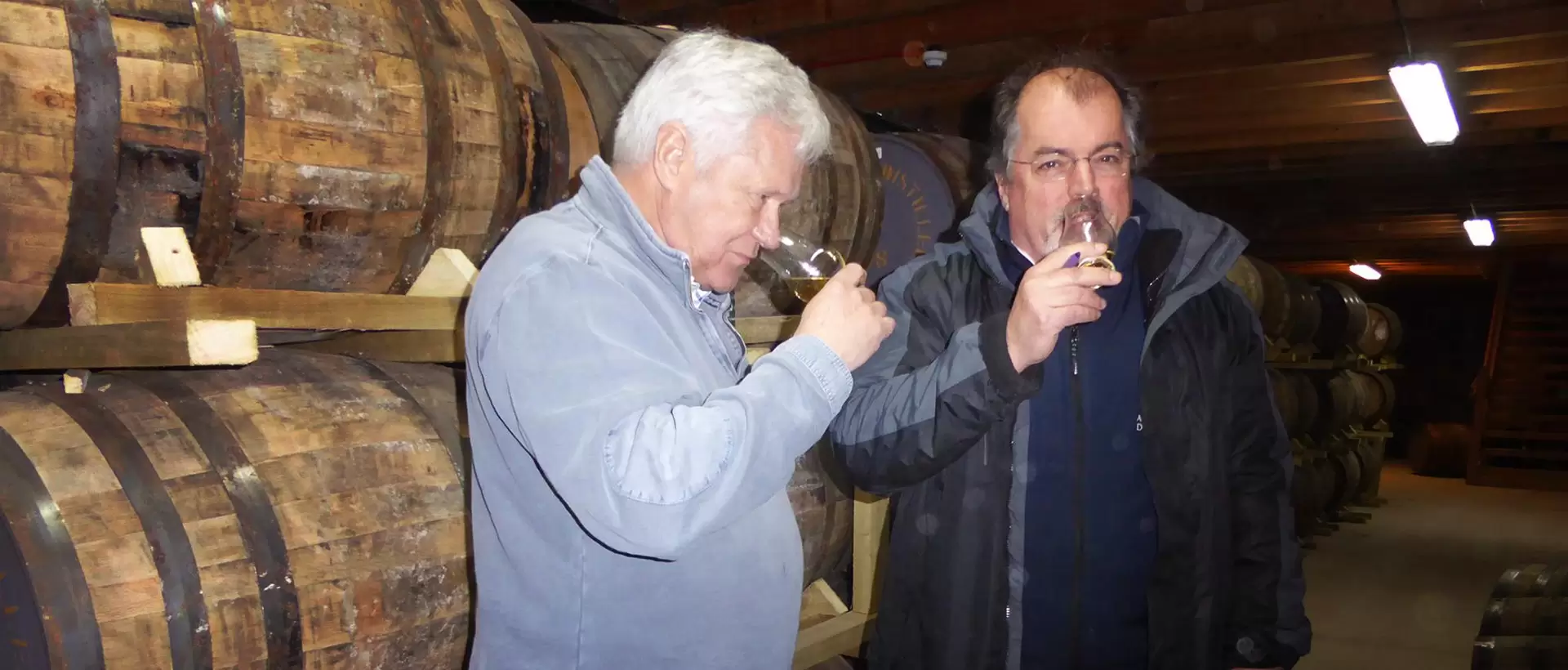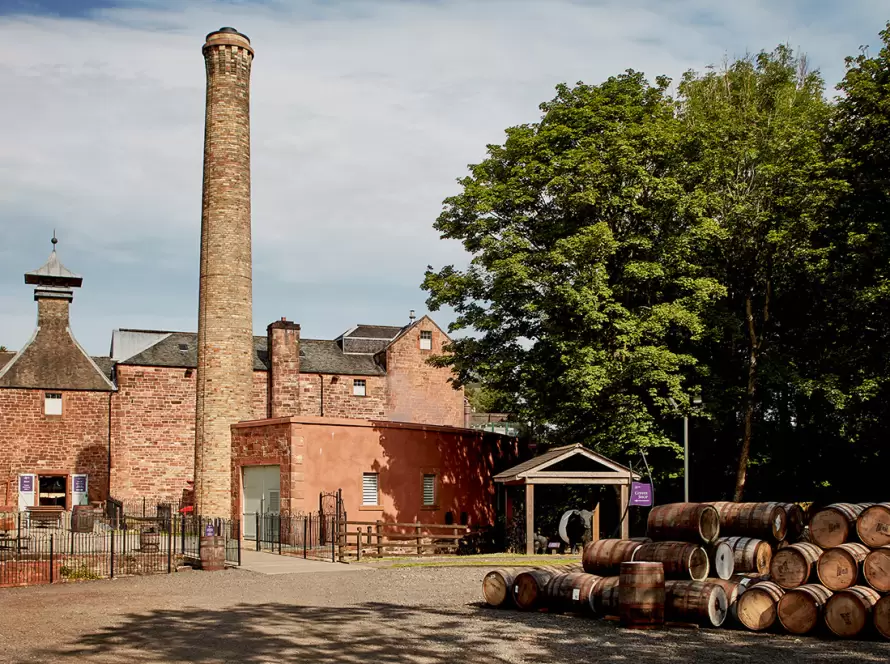Jim Swan and David Thomson had known each other since the mid-1980s when they’d met at a sensory conference in London. Jim was specialist in the chemistry and sensory evaluation of whisky flavour, working at Pentlands Scotch Whisky Research. David was a lecturer at the University of Reading where he taught and conducted academic research on sensory evaluation and consumer science/psychology. They had two other points in common; both were Scots, and both enjoyed Single Malt Scotch whisky. A bond was inevitably formed!
Jim and David met occasionally and otherwise kept loosely in touch over the intervening years. Having completed the purchase of the derelict distillery in 2007, Jim Swan was the first person we called (although common sense might have decreed that we should have called Jim before buying the distillery). We showed Jim the sensory map, explained the rationale behind the positions we’d selected for our ‘theoretical’ peated and unpeated sensory profiles and asked him three questions:
Q.1 Does this make sense? Yes!
Q.2 Could he design a production plant and specify a process that would make whiskies with these sensory specifications? Yes!
Q.3 Could we flip between peated and unpeated whisky production on the same plant? Yes!
Armed with the ‘theoretical’ sensory profiles for our peated and unpeated malts, Jim set about blending various malts together to make sure he understood the specifications and the brief perfectly. It goes without saying that he ‘nailed it’. Teresa, Jim, David and former Distillery Manager, Malcolm Rennie took the specifications and the malts to Forsyth’s of Rothes and so the process of designing a whisky making plant against two very tight sensory specifications began.
Details of our whisky-making plant are described elsewhere on this website. Suffice to say at this point that the desired fruity/estery character is achieved through very limited agitation of the grain bed during mashing and a unique combination of two very specific yeasts used in fermentation. The capacity to make both peated and unpeated spirit on the same plant required separate storage bins for the peated and unpeated malts at the beginning of the process, separate receivers for the peated and unpeated low wines, foreshots and feints at the end of the process……and some very elegant pipework.
The most significant feature of our plant was Jim Swan’s twin spirit still concept. Most Single Malt distilleries have one wash still paired with one spirit still. Annandale’s single copper wash still (12,000 litres) is paired with two copper spirit stills (2 x 4,000 litres). This increases the ratio of the surface area of copper to the volume of liquid (inside the spirit still). Enhanced copper contact during final distillation, leads to increased purification of the spirit due to the complexing of various impurities (especially sulphur compounds and long-chain fatty acids) with copper to form insoluble precipitates that sink to the bottom of the still and are discharged to effluent (spent lees). The fact that our unmatured new make spirit is extremely enjoyable to drink (straight), without a trace of harshness even at 63.5% ABV, is testimony to the efficacy of our process. (We sell this as peated and unpeated Rascally Liquor®.)
Sadly, Dr Jim Swan died suddenly in February 2017.
JIM MURRAY’S 2020 WHISKY BIBLE
Fast forward to 2018/19 when the very first of our fastest maturing Single Malts were beginning to reach sensory maturity. It was perfectly clear that the combination of Jim’s plant and process design, our choice of casks and Annandale’s perfect maturation microclimate, had delivered against our ‘theoretical’ sensory profiles……exactly! Better still, both our peated and unpeated Single Malts were highly acclaimed in Jim Murray’s 2019 & 2020 Whisky Bibles, with one of our 2015 peated casks receiving the accolade in 2020 of ‘Best Single Cask, Single Malt Scotch Whisky – 10 Years and Under’.






